India's maritime strength is entering a transformative phase. The Indian Navy has adopted three powerful mantras—Indigenization, Innovation, and Integration to shape its journey toward a fully Aatmanirbhar future by 2047. This bold initiative marks a strategic shift from dependence to dominance, positioning Indian industry at the heart of next-generation naval warfare development.
Indigenization is more than a policy; it's a national commitment. The Indian Navy is ensuring that the majority of its ships, systems, and components are designed and built within the country. Out of 65 ships under construction, 63 are being built at Indian shipyards, symbolizing a true Builder’s Navy.
It is a matter of immense pride for us as a nation that India is one of only six countries in the world capable of designing, building, and operating both aircraft carriers and nuclear-powered ballistic missile submarines (SSBNs). This remarkable achievement stands as a testament to India’s growing technological maturity, industrial capability, and strategic foresight.
This milestone represents not just a capability, but a mindset one where Indian engineering firms, R&D units, and technology partners are driving home-grown innovation. By promoting local manufacturing of critical systems like propulsion units, sensors, and weapon systems, the Navy is reducing its import dependence and strengthening India’s industrial base.

Innovation is deeply embedded in the Indian Navy's DNA. As author Steven Johnson notes in his book Where Good Ideas Come From, innovation does not come from giving incentives; it comes from creating environments where ideas can connect.
This philosophy perfectly mirrors the Navy's approach to building a culture of creativity and collaboration. Recognizing that innovation thrives in connected ecosystems, the Indian Navy established the Naval Innovation and Indigenisation Organisation (NIIO) in 2021. The NIIO acts as a catalyst linking industry, academia, startups, and research institutions to transform bold ideas into deployable technologies for the defense ecosystem.
Through initiatives like iDEX (Innovations for Defence Excellence) and NIIO, the Navy has been actively nurturing an environment where innovation is continuous, practical, and mission-driven. These initiatives are accelerating the adoption of breakthrough technologies such as artificial intelligence, robotics, autonomous systems, and additive manufacturing, all of which are redefining the future of naval warfare.
The third mantra Integration represents the Indian Navy’s holistic approach to modern warfare and technological advancement. Integration is not only about combining hardware and software systems; it’s about connecting people, processes, and purpose to achieve strategic synergy.
The Navy’s emphasis on integration ensures that advanced platforms such as ships, submarines, aircraft, sensors, and communication networks operate as a unified force. This seamless interoperability is essential for network-centric operations, where real-time data exchange and synchronized decision-making determine mission success.
Integration also extends beyond systems; it involves bringing together industry, academia, and research institutions under one cohesive framework. Through collaborative programs with DRDO, DPSUs, MSMEs, and private technology firms, the Navy has built an ecosystem that ensures technological innovation flows smoothly from concept to deployment. This partnership-driven approach enhances agility, reduces development cycles, and ensures that the latest indigenous technologies are rapidly integrated into frontline operations.

The establishment of platforms like the Technology Development Acceleration Cell (TDAC) and the Naval Design Bureau (NDB) highlights the Navy’s vision of institutional integration, where design, testing, production, and deployment work hand in hand. This integrated structure ensures that the Navy remains future-ready, adaptable, and self-reliant in the face of evolving maritime challenges.
At RA Global Tech Solutions, this vision deeply resonates with our mission of driving engineering innovation, design excellence, and technological independence through advanced engineering design services, 3D scanning, reverse engineering, and product development. As India’s defense and maritime sectors evolve, the synergy between industry and the armed forces has never been more vital. Our precision engineering and manufacturing support services echo this very principle. From casting and forging to digital design validation and reverse engineering, we enable industries to replicate, refine, and reinvent components with world-class accuracy essential for achieving true indigenization.
Our work in 3D laser scanning, CAD modeling, and rapid prototyping empowers defense and manufacturing clients to visualize, simulate, and perfect their designs with exceptional accuracy. By combining creativity with technology, we help bridge the gap between conceptual design and production reality. We practice this same philosophy through our end-to-end service ecosystem, integrating product design, analysis, prototyping, and testing under one roof. Our solutions are designed to align with the broader vision of Aatmanirbhar Bharat, ensuring that technology and talent come together for maximum impact.
Our collaboration-centric approach and advanced technology capabilities make RA Global a trusted partner for industries contributing to India’s strategic growth, from marine engineering to aerospace and heavy manufacturing.
As India moves toward its goal of becoming a fully Aatmanirbhar defense power by 2047, collaboration between the Navy and Indian industry will define the success of this journey. The three mantras Indigenization, Innovation, and Integration are not just guiding principles; they represent a roadmap to a stronger, smarter, and more secure India.
RA Global Tech Solutions stands committed to being part of this transformation, delivering engineering solutions that reflect the precision, integrity, and innovation the Indian Navy itself embodies.
In today’s fast-paced technological world, innovation and adaptability are essential for business success. One crucial process that enables companies to stay competitive is reverse engineering. At RA Global Tech Solutions , we provide advanced reverse engineering services that empower organizations to unlock new opportunities, optimize designs, and accelerate innovation.
Reverse engineering is the process of analyzing and reconstructing an existing product, components, or system to understand its design, structure, and functionality. This process helps uncover valuable design insights that can be used to improve, replicate, or reimagine products for future use.
Through advanced 3D scanning and CAD modeling techniques, our team can capture precise details of even the most complex geometries helping businesses modernize legacy parts and drive smarter product development.

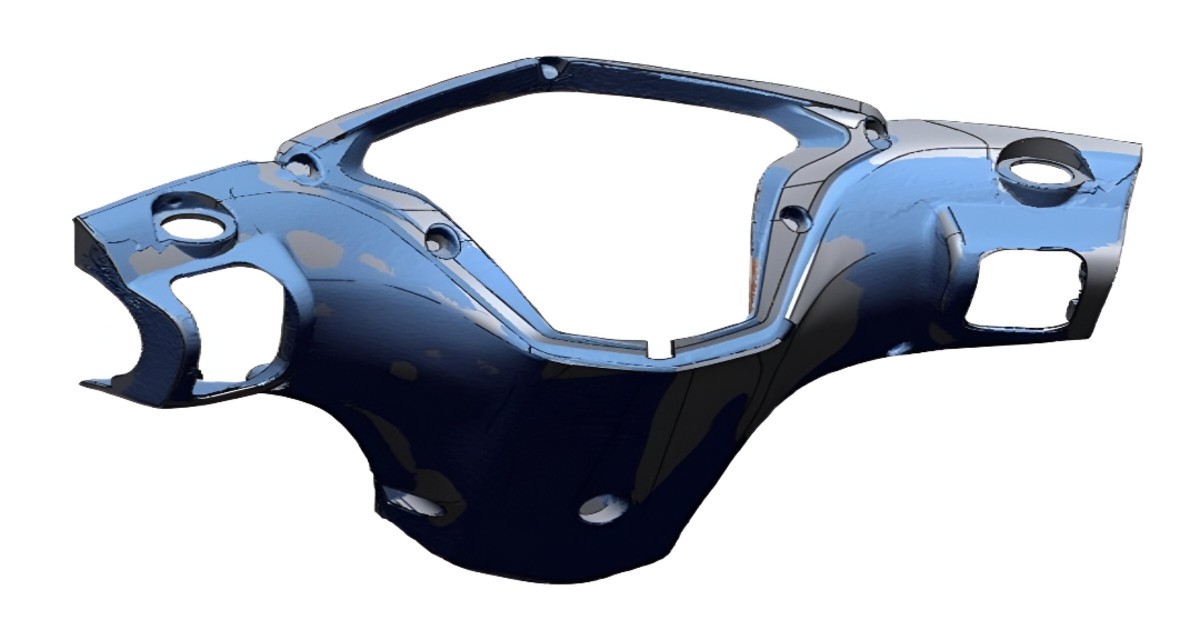
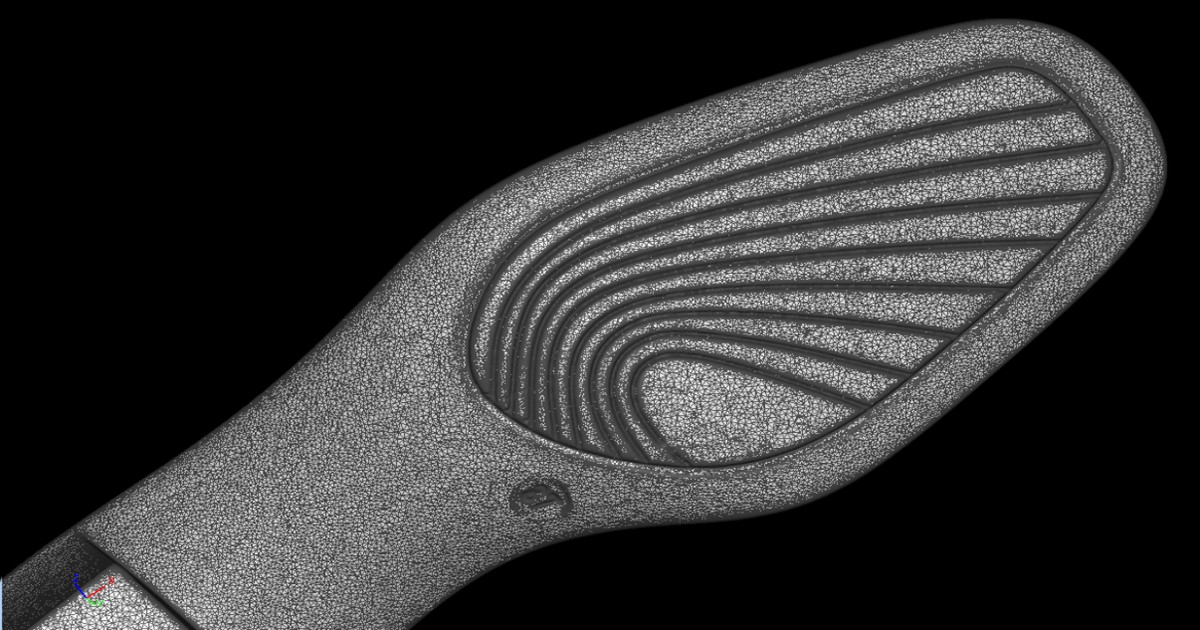
At RA Global Tech Solutions, we combine state of the art 3D scanning, 3D CAD modeling, and engineering simulation to deliver comprehensive reverse engineering solutions. Our team supports diverse industries from automotive and aerospace to industrial machinery and medical devices helping clients transform ideas into tangible innovations.
Our services ensure:
Reverse engineering empowers businesses to reinvent the future. At RA Global Tech Solutions, we deliver cutting-edge reverse engineering services that drive innovation, reduce costs, and achieve manufacturing excellence. Let's unlock the potential of reverse engineering and shape the future of your business.
The Indian manufacturing sector is undergoing a massive transformation, powered by government policies, digital innovation, and rising global demand. With initiatives like Make in India, Atmanirbhar Bharat, and the Production Linked Incentive (PLI) schemes, the country is steadily becoming a global manufacturing hub.
In this article, we highlight the top 10 fastest-growing manufacturing sectors in India for 2025 that showcase how these industries are shaping the future.
The Indian EV market is witnessing explosive growth, with EV component exports reaching $23 billion in FY25. Backed by FAME-II and PLI auto schemes, this sector is shaping the future of sustainable mobility.
Tata Motors Nexon EV has become one of India’s most popular electric vehicles, showcasing strong consumer adoption.

Electronics is one of India's fastest-growing industries, valued at $115 billion in 2024 and expected to triple by 2026. The ₹76,000 crore Semicon India Programme is driving investments in semiconductor fabs, chip design, and electronic product manufacturing.
Samsung’s Noida factory, one of the world’s largest mobile manufacturing plants, produces smartphones and consumer electronics for domestic and global markets.
India aims to reach 300 million tonnes of steel production by 2030. Smart automation, predictive maintenance, and AI-powered quality control are reshaping the metals industry.
Tata Steel’s Jamshedpur and Kalinganagar plants lead with state-of-the-art automation and sustainable production practices.
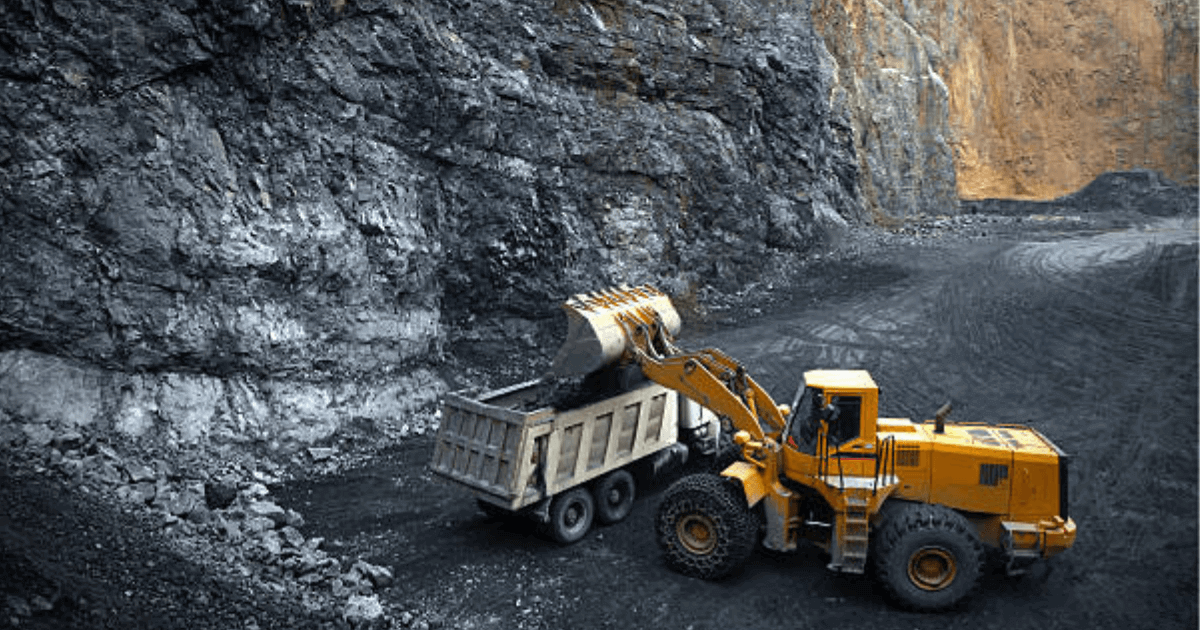
India remains the pharmacy of the world, exporting $25+ billion worth of drugs in 2024. With IoT-enabled cold chain logistics and precision drug delivery systems, biotech and pharma manufacturing are embracing Industry 4.0.
Sun Pharma's advanced facilities produce generics, specialty medicines, and complex formulations for global markets.

Projected to hit $23 billion by 2030, India’s drone sector is becoming crucial for defense, agriculture, surveillance, and logistics.
ideaForge, a pioneer in drone manufacturing, supplies UAVs for mapping, defense, and inspection applications.

India's data center industry surpassed $5 billion in 2024, growing at 25% CAGR. Rising demand for AI, IoT, and cloud services is fueling large-scale investments in digital infrastructure.
Sify Technologies operates modern data centers across India, supporting enterprises with scalable cloud and IT services.

The embedded systems market, valued at $4.47 billion in 2024 with a CAGR of 10.3%, powers robotics, PLCs, and smart factories. Industrial automation is helping manufacturers improve productivity, reduce errors, and cut costs.
Bosch India leverages advanced automation and embedded platforms for automotive and industrial component production.
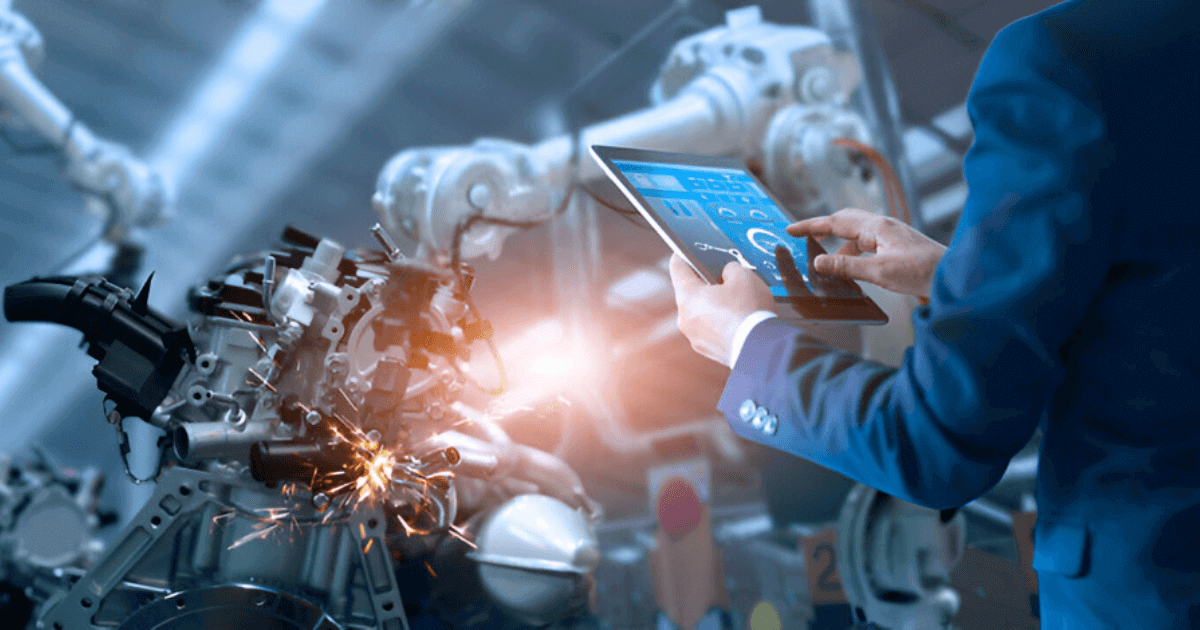
Technical textiles are gaining momentum in sectors like defense, sports, healthcare, and agriculture. Innovations such as RFID integration, antimicrobial fabrics, and biosensor-embedded wearables are fueling growth.
SRF Limited produces high-performance technical textiles for industrial and defense applications.

India is benefiting from the global China+1 strategy, emerging as a reliable supplier of specialty chemicals used in agriculture, pharma, and construction. Automation ensures safe, efficient, and scalable chemical production.
Meghmani Finechem and Hikal are expanding their specialty chemical facilities to meet global demand.

The Indian medical device industry is rapidly expanding, driven by Make in India policies and rising healthcare needs. Portable diagnostics, wearable monitors, and affordable surgical tools are in high demand.
HLL Lifecare, a government-owned firm, manufactures medical devices ranging from diagnostic tools to surgical consumables.

RA Global brings precision and innovation to industries with its comprehensive suite of 3D scanning, reverse engineering, and product design services. By combining cutting-edge technology with expert knowledge, we empower businesses to transform their products and processes. From product development and prototyping to production and quality control, RA Global and its solutions help clients achieve accuracy, efficiency, and cost-effectiveness. With a focus on delivering high-quality products, we support companies across manufacturing, automotive, construction, consumer products, drones, aerospace and defense, electric vehicles, general engineering and manufacturing, healthcare and medical devices, oil and gas, robotics and automation, and textiles plant and machinery, driving growth and success in an ever-evolving landscape.
As India's manufacturing sector continues to evolve, driven by government initiatives, digital innovation, and global demand, RA Global is at the forefront of this transformation. With its cutting-edge 3D scanning, reverse engineering, and product design services, RA Global is empowering businesses across the top 10 fastest-growing manufacturing sectors in India to achieve precision, efficiency, and success. By leveraging technology and expertise, RA Global is helping companies drive growth, innovation, and competitiveness in an ever-evolving landscape. Whether you are a startup or an established player, partner with RA Global to unlock new opportunities and shape the future of manufacturing in India.
In the fast-paced world of technology, innovation and vision are the driving forces behind successful companies. RA Global Tech is one such company that has turned its vision into reality, providing cutting-edge technology solutions to businesses worldwide. Let us take a closer look at the story of RA Global Tech Solutions LLP and how it has evolved from an idea to a thriving technology company.

In 2017, RA Global Tech Solutions embarked on a remarkable journey, fueled by a vision to bridge the gap between technology and innovation. From a small office space with just one PC, the company has grown into a trusted partner for businesses across various industries.
With a team of passionate and experienced engineering professionals, RA Global began its quest to deliver tailored solutions that meet the unique needs of its clients. From concept to commissioning, the team ensured seamless execution and exceptional quality, laying the foundation for long-term partnerships with clients.
As the company grew, so did its expertise. The RA Global team expanded, and its capabilities evolved to include
Through its journey, RA Global has remained committed to delivering value to its clients. By fostering strong partnerships and providing exceptional solutions, the company has established itself as a leader in the engineering services industry.
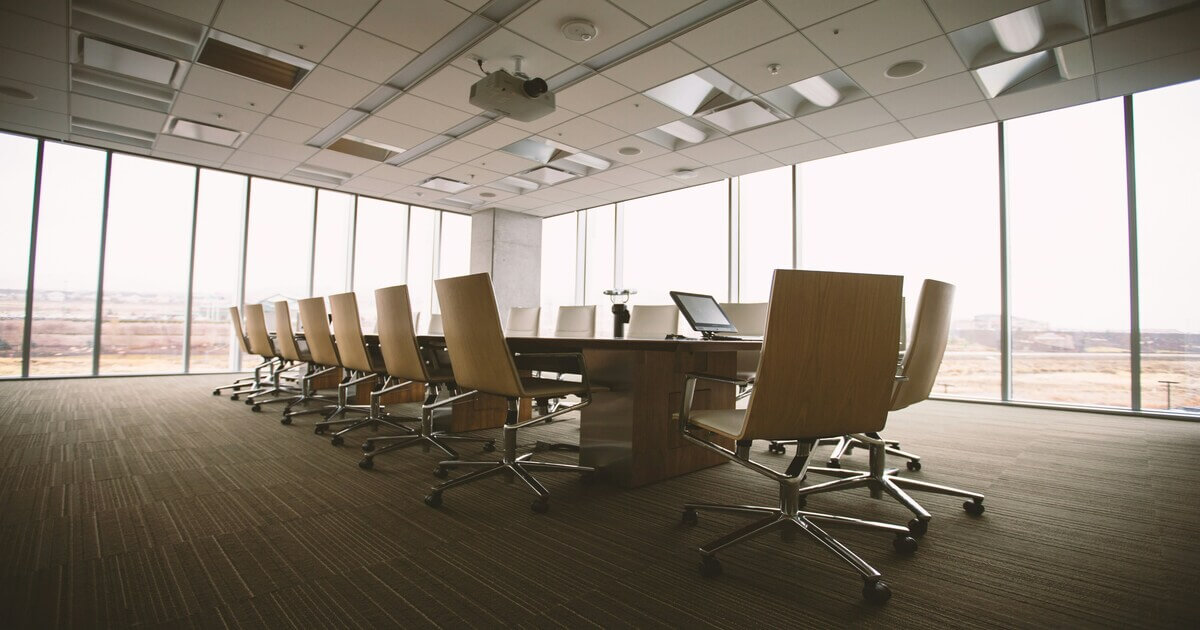
By partnering with RA Global, businesses can unlock the potential of trusted engineering solutions and services, transforming ideas into tangible successes.
Driven by a relentless pursuit of engineering excellence, RA Global Tech Solutions operates as a trusted partner to some of the world's most influential brands across multiple industries, including automotive, aerospace and defense, medtech and healthcare, energy, and more. At the heart of RA Global's approach is a conviction that true engineering transformation comes from partnership. Rather than offering transactional support, the company embeds engineering teams inside client ecosystems through what it calls Virtual Business Units (VBUs). These dedicated teams are empowered to make decisions at speed, collaborate across time zones, and co-create custom solutions at the source of the client need. Whether designing innovative product solutions, optimizing complex systems, or building predictive models, RA Global delivers full lifecycle engineering solutions. With expertise spanning various domains, RA Global is committed to driving engineering excellence and delivering value to its clients. By partnering with RA Global, businesses can unlock the potential of trusted manufacturing solutions and services, transforming ideas into tangible successes.
Our journey began with a vision to bridge the gap between technology and innovation. We have worked tirelessly to make that vision a reality, delivering high-end engineering services that drive innovation and growth. With a team of experienced engineers and experts, we have provided tailored solutions that meet the unique needs of our clients. Our mission is to empower businesses with cutting-edge engineering solutions that enhance their competitiveness, efficiency, and sustainability. We strive to deliver exceptional value to our clients, partners, and stakeholders through our expertise, creativity, and commitment to excellence. At RA Global Tech Solutions, we are dedicated to delivering innovative engineering solutions that drive growth and excellence. With our expertise, commitment to quality, and customer-centric approach, we are confident that we can help businesses achieve their goals.
The transportation industry is on the cusp of a revolution, with electric cars and planes leading the charge. As the world shifts towards sustainable transportation, electric propulsion systems, advanced battery technology, and lightweight materials are playing a crucial role in shaping the future of transportation.
Electric transportation offers several benefits, including

Several key technologies are driving the development of electric aviation and cars, including:
Norway, a country known for its commitment to clean living and sustainable transportation, is now turning its attention to electric planes. With one of the largest Tesla markets in the world, Norway has already demonstrated its dedication to reducing greenhouse gas emissions. Now, it's taking the next step by exploring electric aviation. Norway is making significant strides in electric aviation, showcasing its commitment to reducing emissions and connecting remote communities. The Alia CX300, a fully electric aircraft developed by Beta Technologies, recently completed a test flight from Stavanger to Bergen, marking a major milestone in Norway's electric aviation ambitions.
To achieve decarbonization in aviation, various technologies are crucial. Key among these are innovative propulsion methods like electrification, hybrid power, and hydrogen fuel cells. At Airbus, we're researching electrification to pave the way for industry adoption and regulatory approval of alternative propulsion for aircraft, helicopters, and urban air vehicles.
Hybrid-electric propulsion is set to transform the aviation industry by combining multiple energy sources to optimize energy efficiency and reduce fuel consumption. This innovative technology offers several key advantages, including fuel savings of up to 5% compared to traditional flights, enhanced efficiency through optimized energy management, and a more sustainable future for aviation through reduced greenhouse gas emissions.

At RA Global, we are committed to contributing our expertise in 3D scanning, reverse engineering, and CAD design to help shape the future of electric aviation and cars. Our services include:
While electric aviation and cars hold great promise, there are still challenges to overcome, including:
The future of transportation is electric, and at RA Global, we are excited to contribute to this innovation. With electric propulsion systems, advanced battery technology, and lightweight materials shaping the future of transportation, we're paving the way for a cleaner, quieter, and more efficient transportation industry.
In recent years, 3D Printing has emerged as a transformative force in various sectors around the globe, and India is no exception.India's 3D printing industry is gaining traction, transitioning from prototype-focused applications to end-product manufacturing, driven by reduced costs and accelerated by AI integration.
Agnikul, a Chennai based spacetech firm, made history with the world's first rocket launch powered by a single-piece 3D-printed engine. What's remarkable is that they achieved this feat in just three days, a significant reduction from the typical 10-11 months of preparation time, where manufacturing a rocket engine alone usually takes six months. This innovation greatly cut down time, effort, and costs.
India's 3D printing market is gaining momentum, with diverse applications emerging across industries. According to IMARC Group, the Indian 3D printing market, valued at $707 million in 2024, is projected to reach $4.3 billion by 2033, growing at a CAGR of 21.7%.
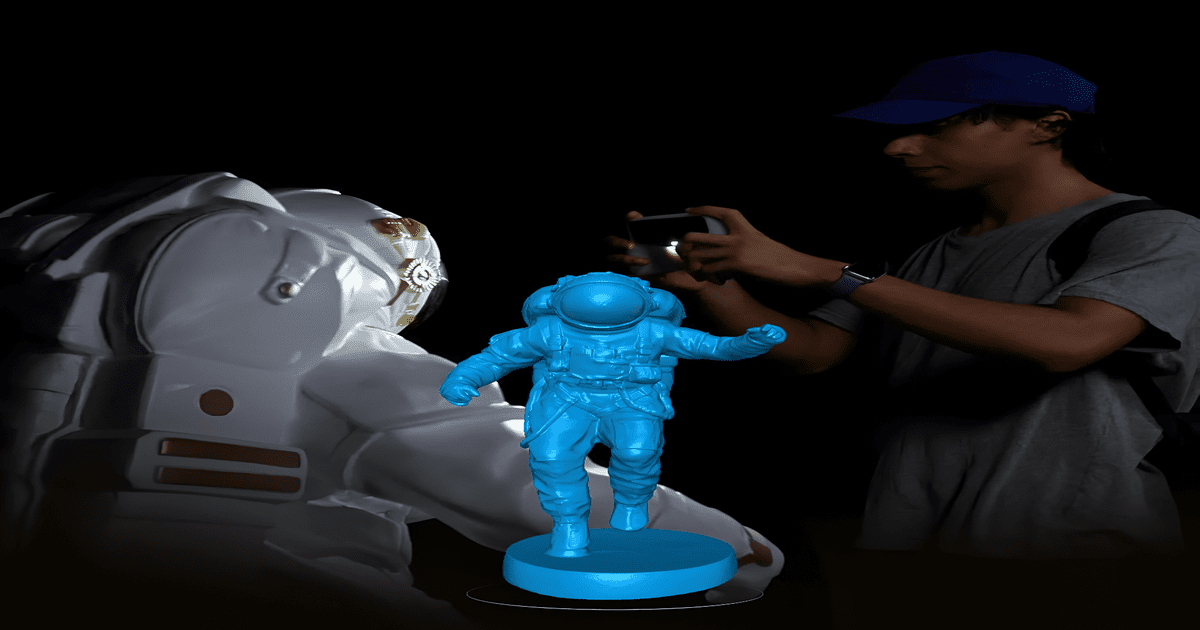
The toy industry is another area where 3D printing is making waves, allowing for designs that were previously impossible or prohibitively expensive to produce. Customizable toys that reflect the preferences of individual consumers are becoming increasingly popular, thanks to this technology. For example, parents can now design toys tailored to their children’s interests, which adds personal value to the products.
This shift toward customization is not only enhancing consumer satisfaction but also promoting a culture of creativity and innovation among young creators and entrepreneurs in India.
RA Global offers various services that can support the implementation of Rocket Fuel to Playful Tools , including
Despite the exciting developments, challenges remain. One significant hurdle is the need for skilled labor capable of operating advanced 3D printing technologies and software. Therefore, educational institutions and industry must collaborate to develop specialized training programs to build a proficient workforce.
Furthermore, regulatory frameworks need to evolve to address intellectual property issues associated with 3D printing. As the technology becomes mainstream, safeguarding innovation while fostering collaboration will be essential for sustained growth.

The 3D printing industry is shifting towards more sustainable raw materials, moving beyond traditional plastics and polymers to eco-friendly options like biodegradable corn starch. This global trend towards environmentally responsible alternatives is being actively adopted in India.
3D printing is poised to be a catalyst for India’s industrial renaissance, fundamentally changing the way products are designed and manufactured across numerous sectors. From aerospace to consumer goods, the applications of this technology are vast and varied.
As we embrace these advancements, India stands at the threshold of a manufacturing revolution—one that has the potential to stimulate economic growth, encourage entrepreneurship, and position the country as a leader in the global market. The possibilities are limitless, and as 3D printing continues to evolve, so too will the landscape of Indian industry.
In the era of Industry 4.0, precision and digital integration are no longer optional; they are the foundation of competitiveness. Engineering and manufacturing sectors are shifting toward data-driven workflows where the line between the physical and digital is seamless. At the heart of this transformation lie 3D scanning and reverse engineering, two domains in which RA Global has established strong expertise.
Technical Foundations of 3D Scanning
3D scanning technologies convert real-world geometries into accurate digital point clouds. Depending on application and accuracy requirements, RA Global deploys:
The resulting point clouds are processed into polygon meshes and then into parametric CAD models. This workflow ensures not only high-fidelity reproduction of geometry but also a solid foundation for simulation, modification, or manufacturing.

Reverse engineering goes beyond digitization; it creates usable design intelligence from physical objects. RA Global applies a structured workflow:
RA Global offers a range of services that leverage 3D scanning and reverse engineering to drive innovation and efficiency in manufacturing. With expertise in CAD services, 3D scanning, and reverse engineering, RA Global can help organizations:
3D scanning and reverse engineering are more than supporting technologies; they are critical enablers of modern, data-driven manufacturing. By mastering the technical workflows from scanning to CAD to additive manufacturing, RA Global provides end-to-end solutions that shorten development cycles, reduce risk, and deliver precision at scale. With RA Global's expertise in 3D scanning and reverse engineering, organizations can unlock new levels of efficiency, innovation, and competitiveness in their manufacturing operations.
A lights-out factory, often referred to as a dark factory, runs with little to no human presence, enabling it to operate autonomously without on-site human intervention, essentially functioning in the dark. As industries look towards the "factory of the future," autonomous manufacturing in these settings is anticipated to expand across various sectors.
Dark factories, also known as "lights-out factories," are revolutionizing the manufacturing industry with cutting-edge automation technologies. These facilities operate without human intervention, leveraging AI-driven robotics, IoT networks, and intelligent automation protocols to ensure seamless 24/7 operation with minimal energy consumption.
India is moving towards dark factories, but challenges remain. The country's manufacturing sector is expected to embrace partial dark factory operations within the next 7-10 years, with fully autonomous, AI-powered factories likely emerging in 15-20 years. Key sectors that will drive this transformation include semiconductors, AI-driven technologies, automation, IoT, and robotics.
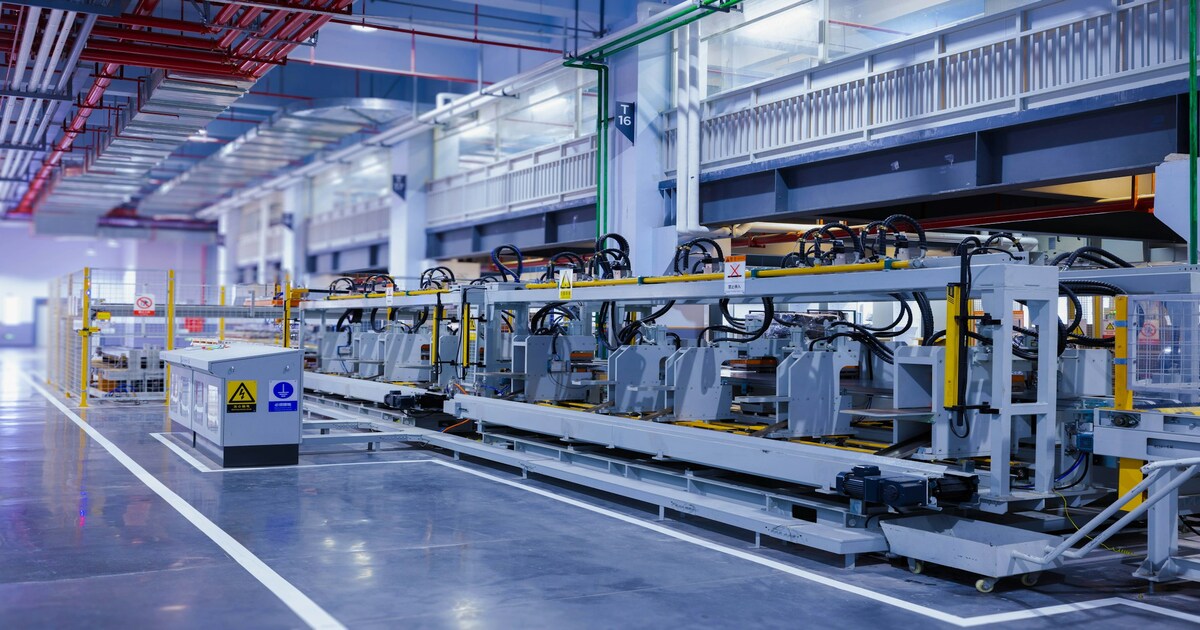
3D Scanning and Reverse Engineering: For precise geometrical digital models for automated production lines. Component Recreation: Reverse engineering uses 3D scan data to recreate digital models of physical parts for manufacturing.
Applications in Dark Factories
Product Design and Development: Creating innovative products with optimized performance and reduced costs.
In dark factories (lights-out factories), product design and development leverage advanced technologies to enable autonomous manufacturing and optimization.
Key Aspects
Technologies Enabling Dark Factory Product Development
Long-Range 3D Scanning and As-Built Documentation:
Technologies Involved-
By leveraging these services and technologies, India can navigate the transition to smart manufacturing and capitalize on the benefits of dark factory automation.
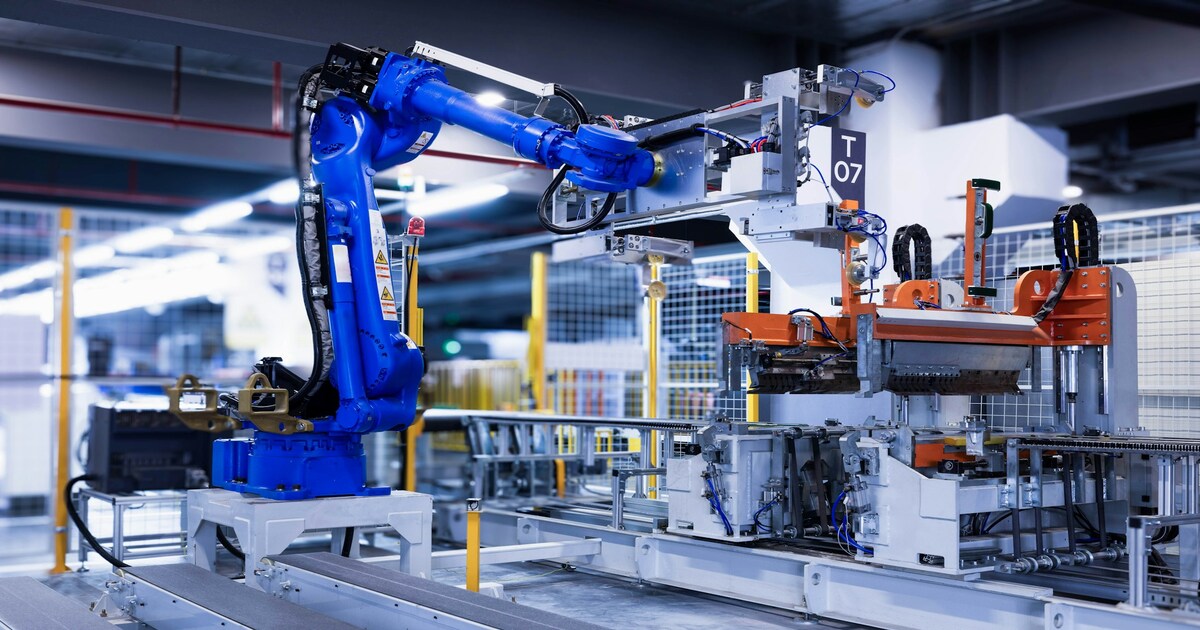
As India moves towards embracing dark factory technologies, it's clear that this revolution in automated manufacturing will bring about significant changes. With benefits like increased efficiency, cost savings, and improved safety, dark factories are poised to transform the manufacturing landscape. RA Global's services, including 3D scanning, CAD design, product development, and database architecture, can help Indian companies navigate this transition and thrive in the era of smart manufacturing. By leveraging these technologies and services, India can capitalize on the benefits of dark factory automation and emerge as a leader in the global manufacturing sector.
Source: google.com
BIM is reshaping how the construction and infrastructure industries plan, design, build, and manage assets across their entire lifecycle. At RA Global Tech Solutions LLP, located on New Link Road, Malad West, Mumbai – 400064, we utilize BIM to support smarter, faster, and more collaborative project delivery.
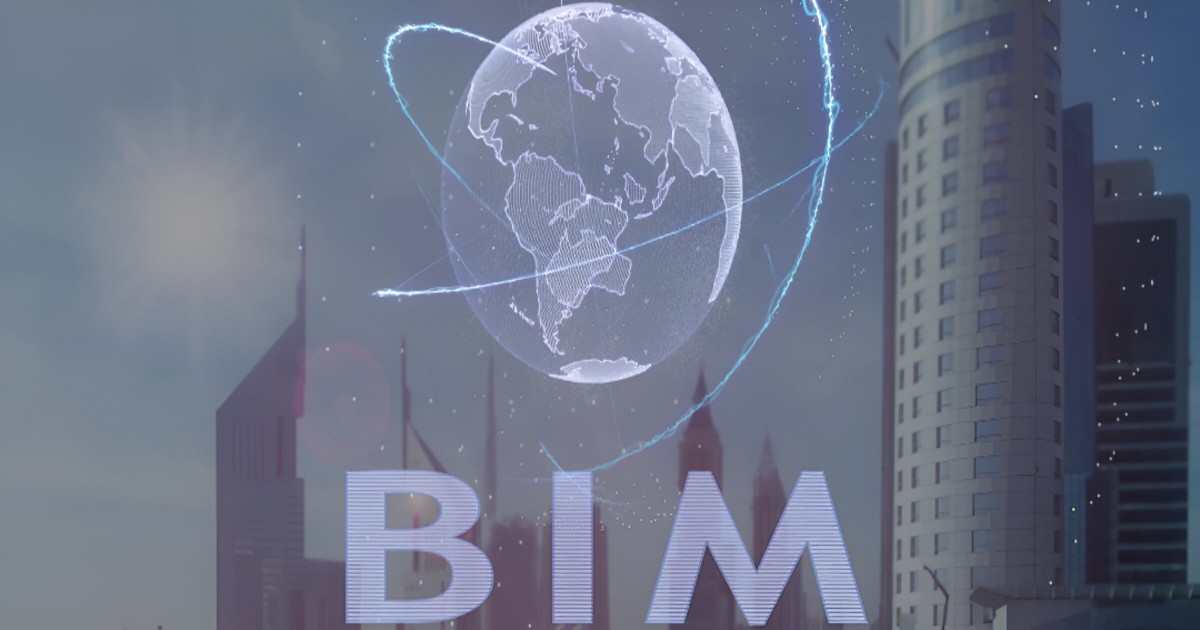
BIM, or Building Information Modeling, is a digital process that involves creating and managing information throughout the lifecycle of a built asset. Unlike traditional 2D drawings, BIM involves intelligent 3D models enriched with data that support decision-making during design, construction, and operations.
This approach improves project coordination, reduces risks, and allows seamless collaboration between architects, engineers, contractors, and facility managers.
The construction industry faces many challenges: tight deadlines, budget constraints, and coordination issues among stakeholders. BIM addresses these problems by offering a smarter workflow based on accurate, shared information.
Improved collaboration and communication
Reduced design errors and rework
Efficient project scheduling and cost estimation
Accurate quantity take-offs
Better facility management post-construction
At RA Global Tech Solutions LLP, we help businesses integrate BIM into their workflows for better project predictability and control.
Understanding BIM involves knowing its foundational elements:
1. 3D Modeling: Visual representation of the project including geometry and spatial relationships
2. 4D Scheduling: Integration of the construction timeline with the model for progress tracking
3. 5D Cost Estimation: Budgeting and cost control tied directly to the components of the model
4. 6D Sustainability: Evaluation of environmental and energy performance over the building's lifecycle
5. 7D Facility Management: Support for operations, maintenance, and future renovations or deconstruction
A vital first step in accurate BIM modeling is data capture. At RA Global Tech Solutions LLP, we utilize FARO Long Range 3D Scanning to collect precise measurements of existing structures and environments. This high-definition scanning technology enables us to generate accurate point clouds that form the foundation of reliable BIM models.
Whether it's a renovation, retrofit, or large-scale infrastructure project, FARO scanning helps ensure that our BIM process begins with dependable, real-world data—minimizing errors and enhancing model fidelity from the outset.
At RA Global Tech Solutions LLP, we deliver BIM services tailored to meet the diverse needs of developers, architects, engineers, and contractors across India and beyond. Our process integrates the latest technology and industry best practices to ensure accurate, timely, and cost-effective results.
Architectural BIM Modeling
Structural BIM Modeling
MEP BIM Modeling
Clash Detection and Coordination
Scan to BIM
As-Built BIM Models
To ensure quality and efficiency, we follow a systematic approach:
Requirement Analysis: Understanding the client’s needs, project scope, and expected outcomes
Model Development: Creating 3D models using tools like Autodesk Revit, Navisworks, and AutoCAD
Information Integration: Embedding data into the models for cost, material, scheduling, and sustainability
Coordination and Review: Detecting design conflicts, performing coordination checks, and revising models accordingly
Final Delivery: Supplying high-quality models and documentation for construction or facility management
BIM is not limited to large commercial or infrastructure projects. It is valuable for:
Architectural Firms: Streamline design and coordination
Engineering Consultants: Improve accuracy and reduce revisions
Contractors and Builders: Save time and minimize material waste
Facility Managers: Make informed decisions during operation and maintenance
At RA Global Tech Solutions LLP, our experts help businesses across these segments harness the power of BIM effectively.
Here are some practical scenarios where BIM adds value:
High-Rise Buildings: Coordinate MEP systems in confined spaces to avoid rework
Hospitals and Healthcare Facilities: Ensure optimal equipment layout and compliance with safety standards
Airports and Transportation Hubs: Support phased construction and operational planning
Industrial Plants: Manage complex systems and maintenance planning using digital twins
Located in Malad West, Mumbai, RA Global Tech Solutions LLP is a trusted partner for forward-thinking construction and design companies. Our team is skilled, tech-savvy, and committed to delivering results.
Industry-Recognized Software Proficiency
In-Depth Technical Knowledge
Commitment to Project Timelines
Customized Solutions Based on Client Goals
Responsive Communication and Support
As construction becomes more digitized, BIM will play an even more critical role. Emerging trends include:
Integration with AI and Machine Learning
Augmented Reality for On-Site Visualization
IoT-Based Smart Building Management
Blockchain for Secure Data Sharing
RA Global Tech Solutions LLP stays ahead of the curve by continuously updating our tools and methodologies to support the future of construction technology.
BIM is revolutionizing how the construction industry operates, making project execution more efficient, data-driven, and collaborative. At RA Global Tech Solutions LLP, we offer comprehensive BIM services that cater to every stage of a building’s lifecycle, from concept to construction to facility management.
If you're ready to make smarter decisions with better data and fewer surprises, BIM is your solution. Partner with us to streamline your next project and build better outcomes with confidence.
In today's rapidly evolving world, having access to precise and detailed 3D models is crucial for success across numerous industries. At RA Global Tech Solutions, we leverage the power of cutting-edge white light 3D scanning technology to provide our clients with unparalleled data capture and a wide range of services. Whether you're in manufacturing, engineering, heritage preservation, or entertainment, our expertise and state-of-the-art equipment can help you achieve your goals.
White light 3D scanning is a non-contact, highly accurate method of capturing the shape and dimensions of an object. Unlike laser scanners, which use a single point of laser light, white light scanners project a pattern of white light onto the object. Cameras then capture the distortions in this pattern, and specialized software reconstructs the object's surface into a precise 3D model. This technology allows us to capture intricate details and complex geometries quickly and efficiently.

Unmatched Accuracy: Our white light scanners capture millions of data points, resulting in highly accurate 3D models that are ideal for reverse engineering, quality inspection, and detailed analysis.
Exceptional Detail: We can capture even the finest details and textures of an object, ensuring that your 3D models are a true representation of reality.
Fast and Efficient: White light scanning is a rapid process, allowing us to complete projects quickly and minimize downtime.
Versatile Applications: This technology is suitable for a wide range of objects, from small, intricate parts to large-scale structures.
Non-Contact and Safe: The non-contact nature of white light scanning ensures that delicate or fragile objects can be safely captured without any risk of damage.
We offer a comprehensive suite of white light 3D scanning services tailored to meet the specific needs of our clients:
Reverse Engineering: Create accurate digital models of existing parts or products for reproduction, modification, or design improvement.
Quality Inspection: Verify the dimensional accuracy of manufactured parts and identify any deviations from the original design.
3D Modeling for Design: Capture existing designs or create new ones for product development, prototyping, and visualization.
Cultural Heritage Preservation: Digitally preserve historical artifacts, sculptures, and architectural elements for future generations.
Virtual Reality and Gaming: Create realistic 3D models of objects and environments for use in VR experiences, games, and simulations.
Custom Solutions: We work closely with our clients to develop customized 3D scanning solutions for unique applications.
We proudly serve clients across a diverse range of industries, including:
Manufacturing: Improve product quality, optimize production processes, and reduce costs.
Aerospace: Ensure the precision and accuracy of critical components.
Automotive: Streamline design processes and improve vehicle performance.
Architecture and Construction: Document existing structures and create as-built models.
Art and Design: Preserve artistic creations and create digital replicas.
Healthcare: Develop custom prosthetics, orthotics, and medical devices.
Expertise and Experience: Our team of highly skilled technicians has extensive experience in white light 3D scanning and data processing.
State-of-the-Art Equipment: We utilize the latest white light 3D scanning technology to ensure the highest quality results.
Dedicated Customer Support: We are committed to providing exceptional customer service and support throughout the entire process.
Competitive Pricing: We offer competitive pricing for our services, ensuring that you get the best value for your investment.
Ready to experience the power of white light 3D Scanning? Contact us today to discuss your project requirements and let us help you bring your vision to life. We are confident that our expertise and technology will exceed your expectations. Contact Us Today!
© 2025 RA Global Tech Solutions
Site design and developed by Rajkar Global